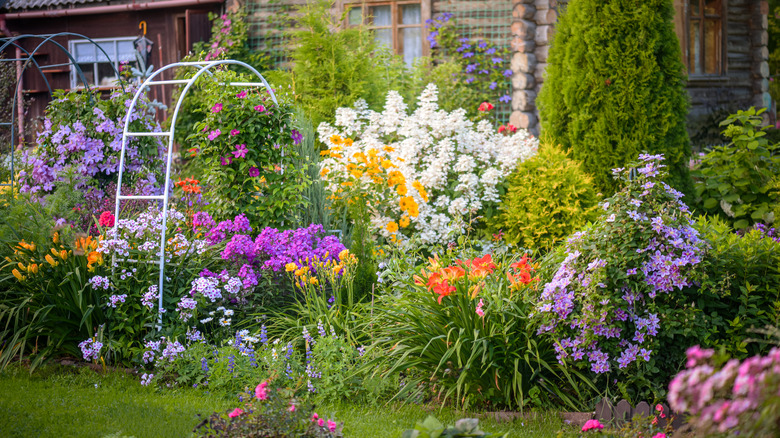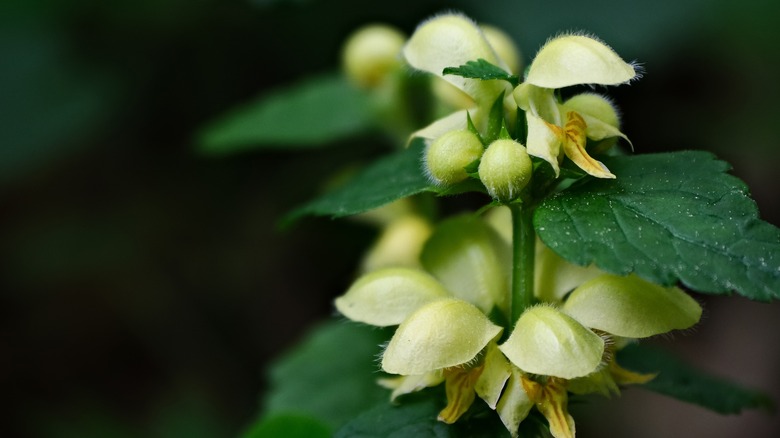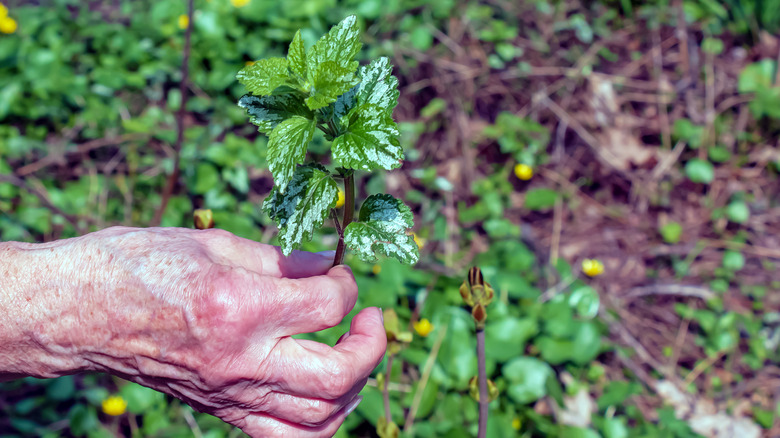The Beautiful Yellow Flowering Plant That's Actually An Invasive Weed
Not all flowers are as lovely as they seem, and the yellow archangel or Lamiastrum galeobdolon is a prime example. The plant is characterized by its hooded bright yellow petals and green leaves. It was introduced to North America from Europe and Asia as a fast-growing perennial ground cover. However, behind its whimsical exterior lies a less charming reality: It's actually a noxious weed.
You may be able to purchase the yellow archangel at your local garden center but it is one of those invasive plants you should never grow in your yard or even in a planter. The yellow archangel is known to cause trouble when it escapes into the wild, which has led to it being banned in one area of the United States. The good news is there are ways to remove this pesky weed from your garden without damaging other plants.
What you need to know about the yellow archangel
It's easy to mistake these deceiving invasive weeds for flowers, due to their bright yellow petals and green spearmint-like leaves. As part of the mint family, one would assume that these flowering plants are beneficial to grow in their garden. However, in reality, the yellow archangel has been flagged in Pacific Northwest regions, including Washington State and British Columbia, for its negative impact on regional wildlife.
Planting yellow archangels in your yard could pose a risk to nearby natural areas. These noxious weeds tend to escape residential planting and grow in concentrated patches in surrounding forests and green spaces. They do not provide adequate sustenance for wildlife, and in fact, smother native plants that do. In large numbers, yellow archangels are capable of disrupting the local ecosystem. As a quarantined species, buying and selling the seeds is prohibited in Washington. However, it's important to prevent the propagation of yellow archangels in the wild no matter where you live.
How to effectively remove yellow archangels from soil and prevent their spread
The best way to prevent the damaging effects of this invasive weed is, of course, to avoid planting it. This includes contained planters such as pots and hanging baskets, as the spread of yellow archangels in the wild is often caused by improper dumping from containers. If you are already growing yellow archangels, there are ways to remove this weed from your yard without harming surrounding plants.
One option is to pull the weeds out by hand or with a tool, roots and all. As with most weeds, it must be pulled out completely to avoid re-growth from happening. Discard the plants in a separate bag and cover the area with a landscape tarp and mulch. This can be time-consuming, but it will ensure minimal damage to nearby flora. Another option is to smother the area with landscape fabric coated in thick layers of newspaper, cardboard, and woodchip mulch. The plants must be thoroughly covered for this method to work. If you're dealing with a large infestation, you may want to consider using mechanical tools and pesticides or seeking professional help. Dealing with an invasive plant can be tricky, as these weeds can survive against all odds. However, being well-equipped with the right knowledge puts you ahead of the game.


